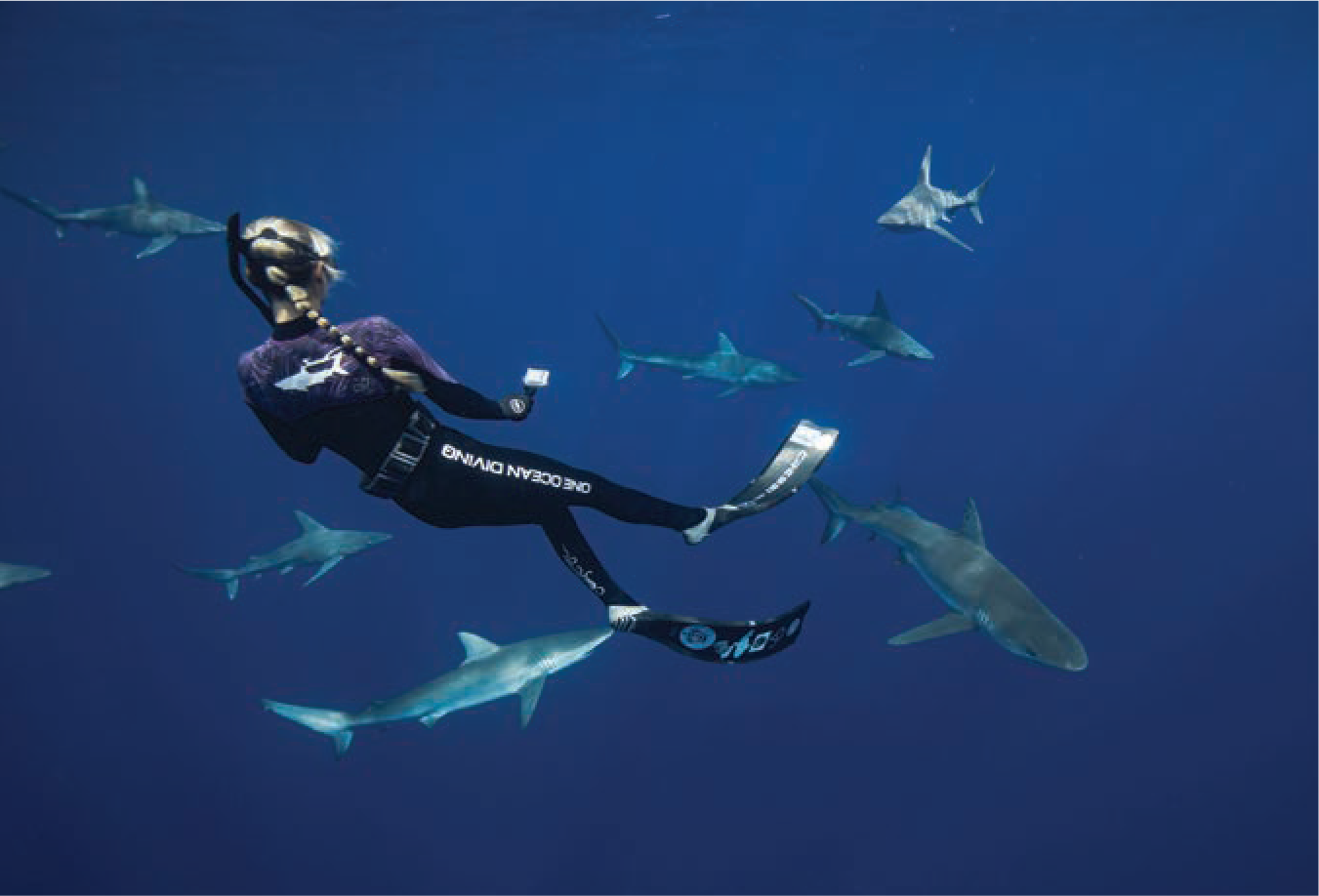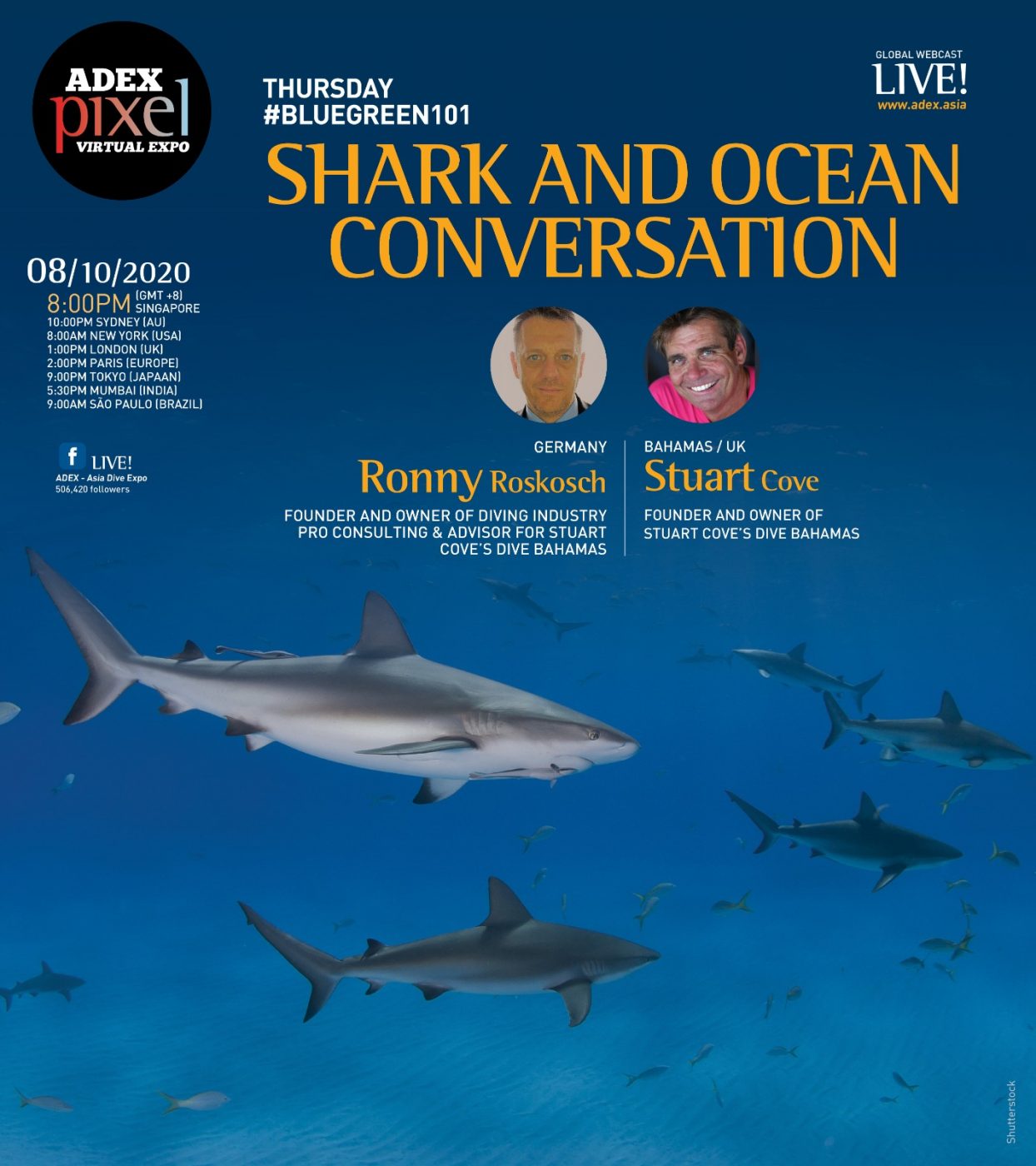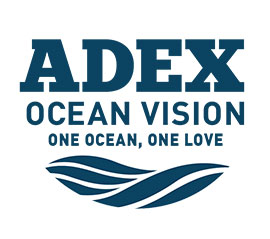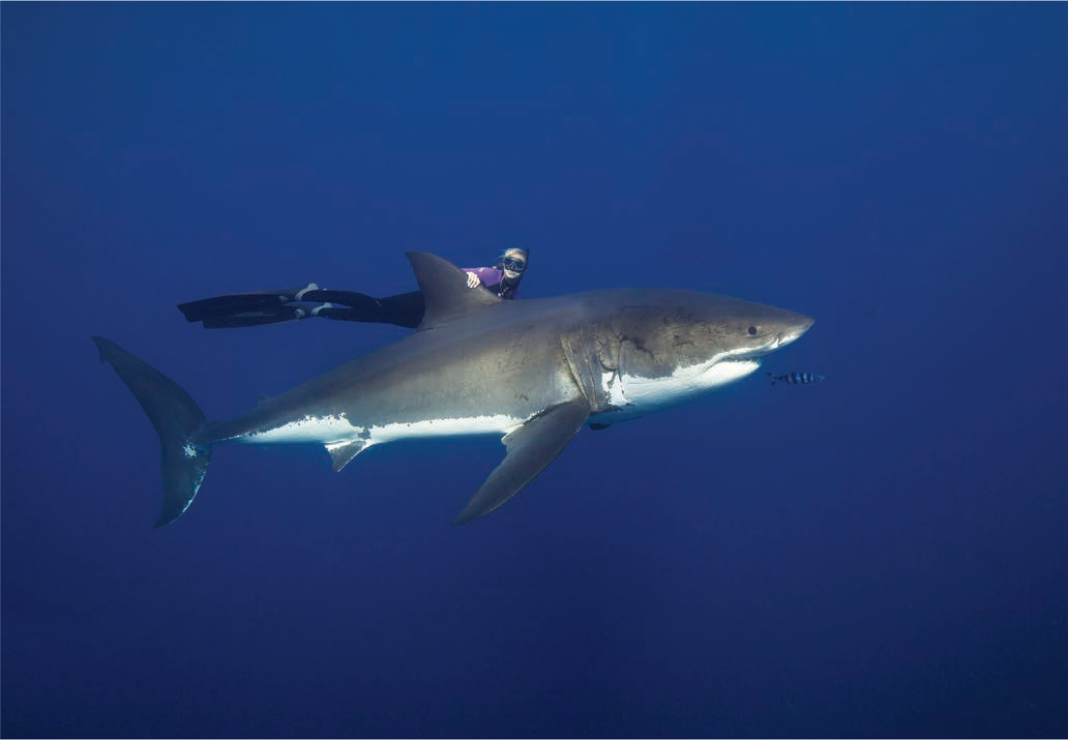Article extracted from Asian Diver Issue 01/2018 (149)
Text by Ocean Ramsey
Images by Juan Oliphant
TO LOCK EYES with a great white shark, watching it gracefully yet powerfully swim in from my periphery directly towards me, is an experience that no words can describe. Every year, I work with the white sharks that aggregate to feed on seals and sea lions around Isla Guadalupe, Mexico, under One Ocean Research, a group of marine biologists based in Hawaii. We set receivers and tags to gather data on the movements of white sharks in the area.
If a tagged shark swims within a kilometre of an underwater receiver, it will record the number code of
the shark’s tag. Before deploying a tag, the shark is photographed on its left and right side and filmed for ease of comparison between males and females, adults and juveniles. Whenever possible, we also work with charter boats that take tourists to see the white sharks and utilise their images to look for the occurrence of some of these tagged sharks outside of the receiver area.
I work with Dr Hoyos, who has dedicated his life and professional career to studying the white sharks of Isla Guadalupe in Mexico. Dr Hoyos has been working and tagging sharks in Isla Guadalupe for over 15 years. Sometimes, Dr Hoyos and I will do 24-hour tracking of certain sharks to record their movements in real-time with our GPS and a VR100 device that shows their current depth and the external temperature being recorded by their tag.
The role of sharks in the oceans’ ecosystems is to pick off the dead, dying, weak, sick, or injured in order to keep lower trophic level populations healthy and in balance. With over 400 million years of evolutionary history, sharks can quickly home in on which way you are facing and decipher body movements. White sharks are very much intelligent enough to be able to tell the difference between us and a natural prey item 99.9% of the time. However, it is unwise to push them in their territory, so the number of dives with them are limited and kept strictly to scientific purposes.
White shark individuals are easily identified by the distinct pattern across their gills. This is where the white of the underbelly meets the dark silver of their dorsal colouration, forming a pattern across the gills that is like a fingerprint for sharks. Working with professional photographers who shoot in high resolution allows us to zoom in on the images and videos to examine small details like tumours and other morphological scars and features.
Biopsies of skin and muscle tissue samples are sent to a lab to look at the genetics and stable isotopes. Muscle samples give us insight into the types of prey the shark has been consuming while examining the skin can identify distinct genetic codes that can be compared to the samples taken from pups that are caught near the continent to see where possible pupping grounds are. At this point in time, no person has ever been able to record a white shark giving birth and pupping grounds are still theoretical. We hope that a better understanding of the movements of white sharks can help support conservation efforts to expand protection for them.

Unfortunately, white shark populations around the planet are dropping and the iconic species is disappearing. White sharks are very slow to reproduce, they pup a few young, and we don’t know how many of their pups actually survive to adulthood.
I’ve been seeing many of the same larger individuals every one to three years over the last 10 years at Isla Guadalupe – a testament to just how few individuals there are in the area. The photo identification record for Isla Guadalupe has only around 200 individuals, and many juveniles are not yet of reproductive range, and may not survive long enough to reproduce due to the high chances of being caught in nets, longline fisheries, killed for sport or for shark’s fin soup – the number one reason sharks are being killed around the planet.
You can help save white sharks by supporting good scientific efforts, but more so by supporting good legislative action to better protect them and also by making daily consumer choices that don’t support the killing of sharks.
Like what you’ve read so far? Check out our LIVE! Panel Discussion on the Shark and Ocean Conversation today, 8 October 2020, at the following times:
Singapore – 8PM / Sydney – 10PM / New York – 8AM / London – 1PM / Paris – 2PM / Tokyo – 9PM / Mumbai – 5.30PM / Sao Paolo – 9AM

This panel features:


